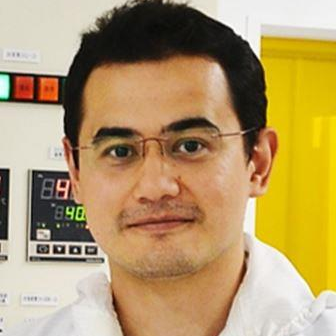Biosensors for MicroTAS
A special issue of Biosensors (ISSN 2079-6374). This special issue belongs to the section "Biosensors and Healthcare".
Deadline for manuscript submissions: closed (31 March 2022) | Viewed by 7455
Special Issue Editors
Interests: biosensors; signal measurement; biorobotics; micro devices; MEMS sensors; glass micro fluidicsdevice; micro fabrication
Special Issues, Collections and Topics in MDPI journals
Interests: microfluidics; mechanics; cell devices; electronics; analytical chemsitry
Interests: biomicrofluidics; plasmonic biosensors; droplet microfluidics; lab-on-a-chip devices; cytometry
Special Issues, Collections and Topics in MDPI journals
Special Issue Information
Dear Colleagues,
We are pleased to invite you to contribute to this Special Issue on Biosensors for MicroTAS, which are emerging research subjects with various applications from the macro to the micro scale. MicroTAS is a multidisciplinary field involving the design, construction, fabrication, operation, and use of robots/devices/instruments for diagnostic, evaluation, measurement, rapid detection in food safety, chemical, biological, medical diagnostic, and environmental monitoring applications.
This Special Issue will focus on novel applications and methodologies in the field of microTAS for fully exploring the limitations of biosensor technology, including, but not limited to:
- automation of lab-on-a-chip and other biochip and microarray systems;
- on-chip measurement, evaluation, analysis, and detection for microTAS purposes;
- the development of biosensor methodologies and applications;
- methods for the fabrication of chip-based detection devices;
- biophotonic sensors and chemical sensing systems;
- novel biological and chemical sensors, including smart materials and microfluidic components; and
- advanced bionics sensors.
Dr. Yaxiaer Yalikun
Dr. Yoshitake Akiyama
Dr. Ming Li
Dr. Dahai Ren
Guest Editors
Manuscript Submission Information
Manuscripts should be submitted online at www.mdpi.com by registering and logging in to this website. Once you are registered, click here to go to the submission form. Manuscripts can be submitted until the deadline. All submissions that pass pre-check are peer-reviewed. Accepted papers will be published continuously in the journal (as soon as accepted) and will be listed together on the special issue website. Research articles, review articles as well as short communications are invited. For planned papers, a title and short abstract (about 100 words) can be sent to the Editorial Office for announcement on this website.
Submitted manuscripts should not have been published previously, nor be under consideration for publication elsewhere (except conference proceedings papers). All manuscripts are thoroughly refereed through a single-blind peer-review process. A guide for authors and other relevant information for submission of manuscripts is available on the Instructions for Authors page. Biosensors is an international peer-reviewed open access monthly journal published by MDPI.
Please visit the Instructions for Authors page before submitting a manuscript. The Article Processing Charge (APC) for publication in this open access journal is 2700 CHF (Swiss Francs). Submitted papers should be well formatted and use good English. Authors may use MDPI's English editing service prior to publication or during author revisions.
Keywords
- lab-on-a-chip
- biochips
- biophotonic sensors
- microfluidics
- chemical sensing
- microarrays









